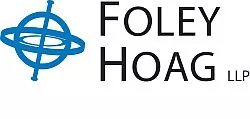- with readers working within the Business & Consumer Services and Media & Information industries
- within Media, Telecoms, IT and Entertainment topic(s)
Earlier this week, my colleagues Adam Kahn and Kevin Chen posted about the proposed rule issued by the Fish and Wildlife
Service and the National Marine Fisheries Service that would
rescind the definition of "harm" under the Endangered
Species Act to exclude adverse impacts on habitat. As Adam and
Kevin noted, FWS and NMFS rely in part on the recent Supreme Court
decision in Loper Bright Enterprises v. Raimondo,
stating that the "single, best meaning" of the statute
excludes such habitat impact. I write briefly as a follow-up just
to discuss whether FWS and NMFS are right, and whether the new rule
might not have a better chance of survival under the now discarded
Chevron test.
First, a disclaimer – I have no real ability predict what the
Supreme Court will do in any given case. Given its general
anti-regulatory bent, it might well sustain the rule under any
test, assuming that it is promulgated in its current form and is
then challenged in court. That being said, I think that the Court
might instead conclude that the elimination of habitat damage from
the definition of harm is not the "single, best meaning"
of the statutory language.
For one thing, over the more than 50-year life of the ESA, probably
99.8% (what we in the biz refer to as "false precision")
of all of FWS's and NMFS's efforts in implementing the ESA
have been devoted to habitat protection. I know that, from a
jurisprudential perspective, there is limited utility in relying on
Congressional acquiescence, but the course of ESA implementation
over that 50 years is difficult to ignore, particularly given
Congress's failure to take any steps to rectify the
agencies' "incorrect" interpretation of the ESA.
Secondly, and speaking as a lawyer, and not a conservation
biologist, I think it is fairly clear that an interpretation of the
ESA that excludes habitat damage literally makes the statute
pointless. There's a reason why the agencies have spent almost
all of their time focused on habitat protection since 1973 –
if the habitats of endangered species are not protected, then there
is no hope of saving endangered species. Would SCOTUS really
support an interpretation of the word harm that not only goes
against 50 years of interpretation by the implementing agencies,
but also makes it impossible to achieve to purpose of the
ESA?
On the other hand, getting the new rule affirmed under
Chevron would seem to be relatively straightforward. As I have discussed previously, under
Chevron, agencies were free to shift from one permissible
interpretation of the statute to another permissible interpretation
of the statute. Demonstrating that the new interpretation of harm
is "permissible" is necessarily an easier case to make
that demonstrating that it is the "single, best
meaning."
Alas, there's no way to run an experiment and have SCOTUS
review the rule under both Chevron and Loper
Bright in order to see if the outcome would be different.
Given the ideological predilections of the current Court –
and notwithstanding the caveat I gave earlier – it is
plausible to think that SCOTUS would affirm the new rule. On the
other hand, it's not a foregone conclusion and, if the liberals
somehow pick up two votes and strike down the new rule, I would not
be shocked if Justice's Kagan's hypothetical majority
opinion were to include a rather pointed "I told you
so."
To view Foley Hoag's Law and the Environment Blog please click here
The content of this article is intended to provide a general guide to the subject matter. Specialist advice should be sought about your specific circumstances.


